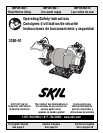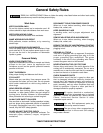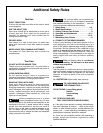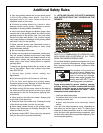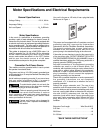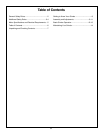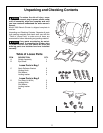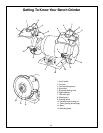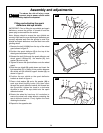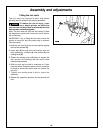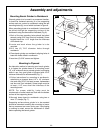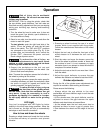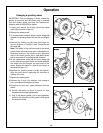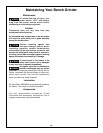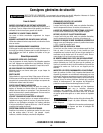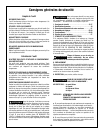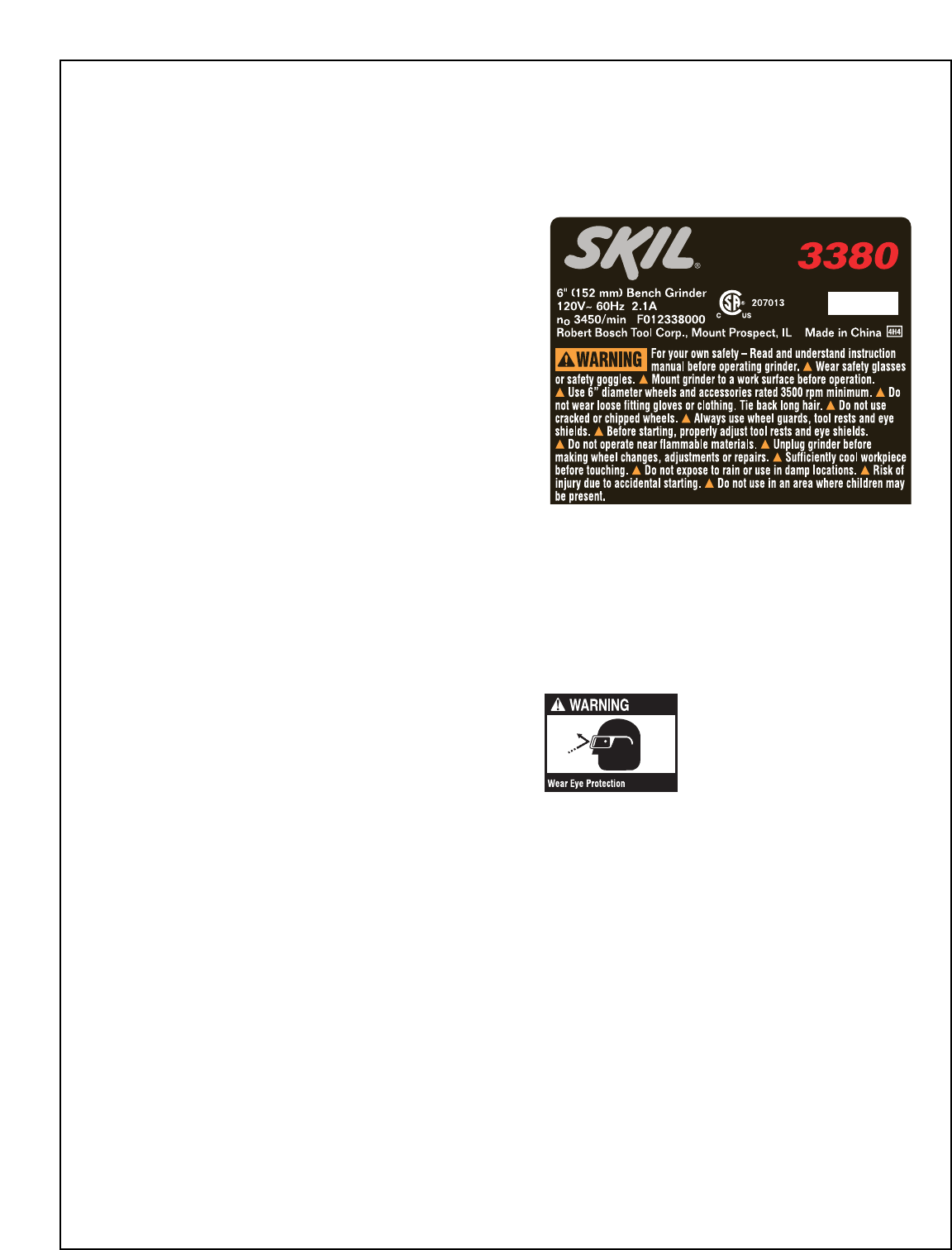
c. Only use grinding wheels with a bore exactly equal
t
o that of the grinder arbor (shaft). Your tool is
equipped with a 1/2" arbor. Never machine an
undersize wheel to fit an arbor.
d. Examine grinding wheels for cracks or other
damage before using grinder. Replace cracked,
damaged or vibrating wheels immediately.
e. Insure that wheel flanges and blotters (paper discs
on each side of the grinding wheel) are used to mount
grinding wheels to the grinder shaft. Use only wheel
flanges furnished with grinder. Use of other flanges
may cause damage or breakage to the grinding wheel
and result in injury to the operator.
f. Never operate grinder near flammable fumes or
liquids. Sparks from grinding wheel or motor could
ignite flammable material.
g. Do not overtighten wheel nuts.
h. Always use all guards and eyeshields, making sure
they are properly adjusted and secured. Keep spark
guards close to the wheel and readjust inward as the
wheel wears. Always use wheel guards and covers
when using a wire brush, buffing wheel or standard
grinding wheel.
i. Always use grinding wheels that are rated for safe
use on this grinder. Never use a wheel rated lower
than 3500 R.P.M.
j. Always stop grinder before making any
adjustments.
k. Do not move grinder until it comes to a full stop.
l. Do not force work against the grinding wheel.
Excessive pressure may damage or break the wheel,
resulting in injury to operator or bystander.
m. When turning ON the power, stand to the side of
the wheel and allow the grinder to come up to speed
and operate for one full minute before applying work
to the wheel.
n. Never grind on the side of the wheel. Always grind
on the face of the wheel only.
o. Dress the face of the wheel only. Dressing the side
of the wheel may make it too thin for safe use.
p. Never apply coolant directly to the grinding wheel.
Coolant may deteriorate the bonding strength of the
wheel and cause it to fail.
q. Grinding creates HEAT. Never touch the workpiece
until you are sure it has cooled sufficiently.
11. NOTE AND FOLLOW THE SAFETY WARNINGS
AND INSTRUCTIONS THAT APPEAR ON THE
GRINDER:
12. THINK SAFETY
SAFETY IS A COMBINATION OF OPERATOR COM-
MON SENSE AND ALERTNESS AT ALL TIMES
WHEN THE GRINDER IS BEING USED.
Do not allow familiarity (gained from frequent use of your
grinder) to become commonplace. Always remember
that a careless fraction of a second is sufficient to inflict
severe injury.
The operation of any power tool
can result in foreign objects being
thrown into the eyes, which can
result in severe eye damage.
Always wear safety goggles that
comply with ANSI Z87.1 (shown
on Package) before commencing power tool operation.
Some dust created by power sanding, sawing,
grinding, drilling, and other construction activities
contains chemicals known to cause cancer, birth
defects or other reproductive harm. Some
examples of these chemicals are:
• Lead from lead-based paints,
• Crystalline silica from bricks and cement and other
masonry products, and
•
Arsenic and chromium from chemically treated
lumber.
Your risk from these exposures varies, depending on
how often you do this type of work. To reduce your
exposure to these chemicals: work in a well ventilated
area, and work with approved safety equipment, such
as those dust masks that are specially designed to filter
out microscopic particles.
4.
Additional Safety Rules



